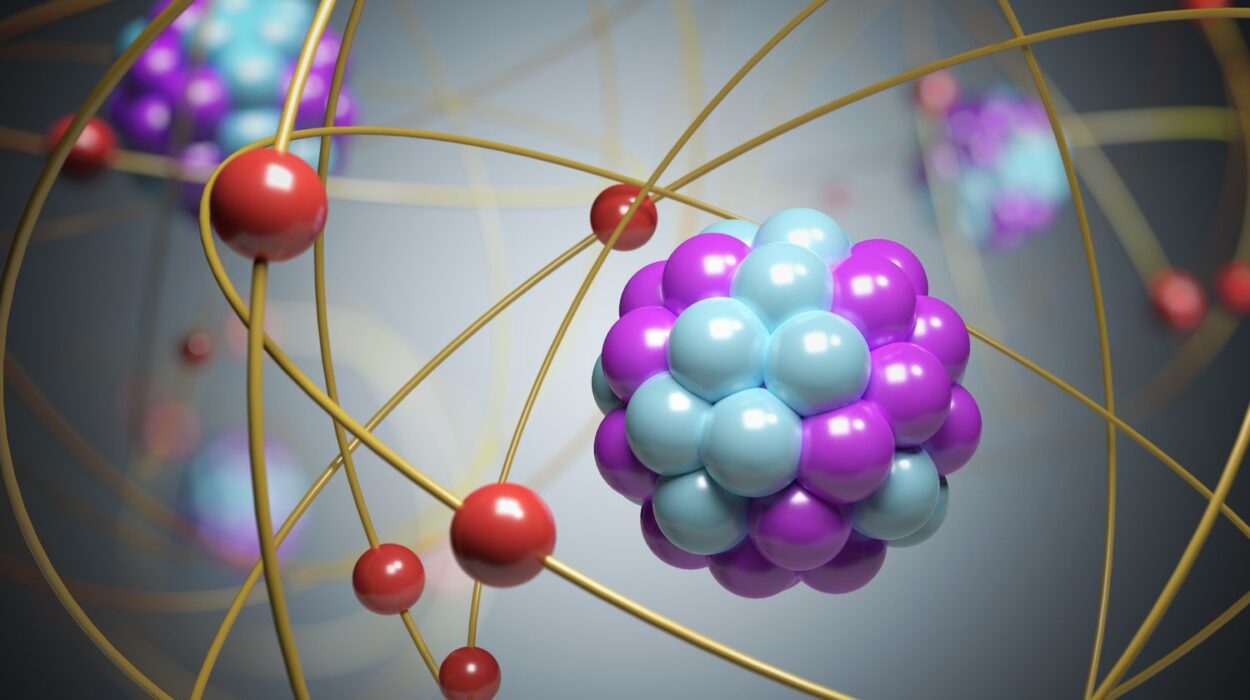Chemistry is often described as the “central science” because it connects physics, biology, geology, medicine, and engineering. But chemistry is more than just reactions in a laboratory—it is the language of matter, the art of transformation, and the bridge between human curiosity and technological progress. Almost every modern invention that has shaped our lives is built upon the discoveries of chemistry.
Think about the clean water you drink, the medicine you take, the phone you hold, the clothes you wear, and even the food you eat—all of these are possible because chemistry has unlocked new materials, reactions, and applications. Chemistry has not only helped us survive but also thrive, pushing the boundaries of imagination to create solutions for global challenges.
In this article, we will explore 15 of the most groundbreaking inventions inspired by chemistry. These inventions have changed history, revolutionized industries, and continue to shape the future.
1. Vaccines
One of humanity’s greatest achievements, vaccines are a triumph of chemistry and biology working hand in hand. The principle behind vaccines relies on immunochemistry—the study of how our immune system recognizes and responds to foreign substances. By introducing weakened or inactive pathogens, or even fragments of them, vaccines “train” our immune system to recognize and fight infections.
The earliest vaccine, developed by Edward Jenner in 1796, used cowpox to protect against smallpox. Today, vaccines have eradicated smallpox, nearly eliminated polio, and saved millions from measles, tetanus, and influenza. Modern vaccines, such as mRNA vaccines for COVID-19, are marvels of molecular chemistry, demonstrating how advances in biochemistry can be applied at global scales. Vaccines show us how chemistry can save lives and alter the course of human history.
2. Antibiotics
Before the discovery of antibiotics, infections from small cuts or routine surgeries were often fatal. The turning point came in 1928, when Alexander Fleming discovered penicillin, the first true antibiotic, derived from a mold. This invention relied on organic chemistry, as scientists learned to isolate and synthesize compounds capable of killing or inhibiting bacteria without harming humans.
Antibiotics revolutionized medicine, making once-deadly diseases curable. They have extended human lifespan, enabled complex surgeries, and reduced maternal and infant mortality. While antibiotic resistance poses a modern challenge, the chemistry behind antibiotics remains one of the most impactful contributions to human health.
3. Clean Water and Water Purification
Access to clean water is one of the most vital achievements of chemistry. Water treatment processes rely heavily on chemical principles—chlorination, ozonation, and flocculation remove harmful microbes and impurities. Activated carbon filters, ion exchange systems, and reverse osmosis membranes also depend on chemistry to purify water.
The invention of large-scale chlorination in the early 20th century drastically reduced waterborne diseases like cholera and typhoid, saving countless lives. Today, water purification technologies continue to evolve, incorporating nanomaterials and advanced polymers to make safe drinking water accessible worldwide. Chemistry turned water from a source of danger into a foundation of life.
4. Fertilizers
Agriculture has always been at the heart of human civilization, but it was chemistry that gave us the ability to feed billions. The invention of synthetic fertilizers in the early 20th century transformed food production. The Haber-Bosch process, developed by Fritz Haber and Carl Bosch, enabled the industrial synthesis of ammonia from nitrogen and hydrogen.
This breakthrough allowed for the creation of nitrogen-rich fertilizers that boosted crop yields dramatically. Without fertilizers, modern population levels would be unsustainable. While fertilizers present environmental challenges today, they remain one of the most important chemistry-driven inventions in human history.
5. Plastics
Plastics are everywhere—in packaging, electronics, medical devices, cars, and even clothing. These versatile materials are the product of polymer chemistry, which studies long-chain molecules made by linking smaller units called monomers.
The first synthetic plastic, Bakelite, was invented in 1907 by Leo Baekeland. Since then, plastics such as polyethylene, polypropylene, and PVC have revolutionized industries with their durability, flexibility, and low cost.
Plastics highlight both the power and responsibility of chemistry. While they have enabled incredible innovations, plastic waste now threatens ecosystems. Current chemical research focuses on biodegradable plastics and advanced recycling methods, showing that chemistry continues to evolve to meet modern challenges.
6. Batteries
From powering flashlights to fueling electric cars, batteries are a cornerstone of modern life. The invention of batteries is rooted in electrochemistry, which studies the relationship between electricity and chemical reactions.
The first true battery was created in 1800 by Alessandro Volta. Since then, countless advancements—from lead-acid batteries to lithium-ion batteries—have transformed how we store and use energy. Lithium-ion batteries, in particular, revolutionized portable electronics and renewable energy storage, enabling smartphones, laptops, and electric vehicles.
Chemistry is also driving future innovations, with researchers developing solid-state batteries, flow batteries, and even bio-inspired energy storage systems.
7. Semiconductors and Microchips
The digital age exists because of chemistry’s role in materials science. Semiconductors like silicon, germanium, and gallium arsenide are the backbone of microchips. Their unique ability to conduct electricity under certain conditions makes them perfect for transistors, the building blocks of modern computers.
Creating semiconductors requires precise chemical processes, including doping (introducing controlled impurities) and photolithography (patterning circuits using light-sensitive chemicals). Without these innovations, computers, smartphones, and the internet would not exist.
Chemistry turned sand (silicon dioxide) into the foundation of the information revolution.
8. Synthetic Dyes
Before synthetic dyes, fabrics were colored with natural materials like plants, insects, or minerals. These dyes were expensive, inconsistent, and limited in variety. Everything changed in 1856, when William Henry Perkin accidentally created the first synthetic dye, mauveine, while trying to synthesize quinine.
Perkin’s discovery launched the modern chemical industry. Synthetic dyes not only revolutionized fashion but also contributed to medicine, as dye chemistry led to the development of important drugs and diagnostic tools. Today, dyes are used in textiles, food, cosmetics, and biotechnology.
Chemistry transformed color from a luxury into an everyday experience.
9. Aspirin and Modern Pharmaceuticals
The invention of aspirin in the late 19th century is one of the most important milestones in medicinal chemistry. Derived from salicylic acid in willow bark, aspirin became the first widely available synthetic drug. It was safer and more effective than its natural precursor, marking the dawn of modern pharmaceuticals.
Since then, medicinal chemistry has given us countless life-saving drugs, from insulin to chemotherapy agents. Each drug represents years of research into molecular interactions, synthesis, and testing. The pharmaceutical industry is a direct testament to chemistry’s ability to improve human health and longevity.
10. Soap and Detergents
Hygiene is one of humanity’s greatest defenses against disease, and it owes much to chemistry. Soap, discovered thousands of years ago, is made through saponification—the reaction of fats or oils with an alkali. Soap molecules have both hydrophilic (water-attracting) and hydrophobic (oil-attracting) parts, allowing them to remove dirt and microbes.
In the 20th century, synthetic detergents emerged, using surfactants derived from petrochemicals. These were more effective in hard water and revolutionized cleaning. Today, detergents are tailored with enzymes, fragrances, and eco-friendly components, reflecting how chemistry continues to innovate in daily life.
11. Glass and Optical Fibers
Glass has been used for thousands of years, but modern chemistry has taken it to new heights. The ability to manipulate silica and other materials at the molecular level has given us everything from shatter-resistant windows to fiber optics.
Optical fibers, made from ultra-pure glass, are one of the most important inventions of the 20th century. They carry light signals over vast distances, forming the backbone of global telecommunications and the internet. Without them, our connected world would be impossible.
This is chemistry at its most transformative—turning sand into the world’s communication highway.
12. Nanomaterials
Nanotechnology is one of the most exciting frontiers in chemistry. By manipulating matter at the scale of nanometers (a billionth of a meter), scientists have created materials with extraordinary properties.
Examples include carbon nanotubes, graphene, and quantum dots. These nanomaterials are stronger than steel, more conductive than copper, and capable of interacting with light in unique ways. They are being applied in electronics, medicine, energy storage, and even environmental cleanup.
Nanomaterials demonstrate the creative power of chemistry to reimagine matter itself.
13. Synthetic Fibers
Clothing has always been essential for survival and identity, but synthetic fibers made clothing more affordable, durable, and diverse. Nylon, invented in 1935, was the first fully synthetic fiber. Polyester, acrylic, and spandex soon followed.
These fibers, developed through polymer chemistry, replaced silk in parachutes during World War II, made sportswear stretchy and comfortable, and brought affordable fashion to millions. While synthetic fibers raise environmental concerns, ongoing chemical innovations are creating recyclable and biodegradable fabrics for a sustainable future.
14. Explosives and Propellants
Though destructive, explosives are also inventions deeply rooted in chemistry. From gunpowder in ancient China to nitroglycerin and TNT, chemical reactions that rapidly release gases and energy have shaped warfare, mining, and construction.
Rocket propellants, another branch of explosive chemistry, enabled humanity to reach space. Solid and liquid fuels, carefully engineered, provided the thrust needed to escape Earth’s gravity. Without this, space exploration—and satellites, GPS, and weather forecasting—would not exist.
Explosives illustrate chemistry’s double-edged nature: its power to destroy, but also to build and explore.
15. Solar Panels
The quest for clean energy has led to one of chemistry’s greatest inventions: solar panels. These devices rely on semiconductors, often silicon-based, to convert sunlight into electricity through the photovoltaic effect.
Advances in materials chemistry have improved the efficiency and affordability of solar cells, with new technologies like perovskite solar cells offering even greater potential. By capturing the sun’s energy, solar panels are helping humanity shift away from fossil fuels, addressing climate change and ensuring a sustainable future.
Solar panels are a shining example of how chemistry can turn light itself into power.
Conclusion
From life-saving medicines to the digital revolution, chemistry has been at the heart of human progress. These 15 inventions inspired by chemistry are not just products of science; they are milestones of human creativity, resilience, and ambition. They show us how understanding the fundamental nature of matter can lead to solutions that change the world.
Chemistry is not finished. New inventions are being imagined every day—materials that heal themselves, medicines that target diseases with precision, and energy sources that could power civilizations sustainably. As long as curiosity drives us, chemistry will continue to inspire the inventions that shape our future.






